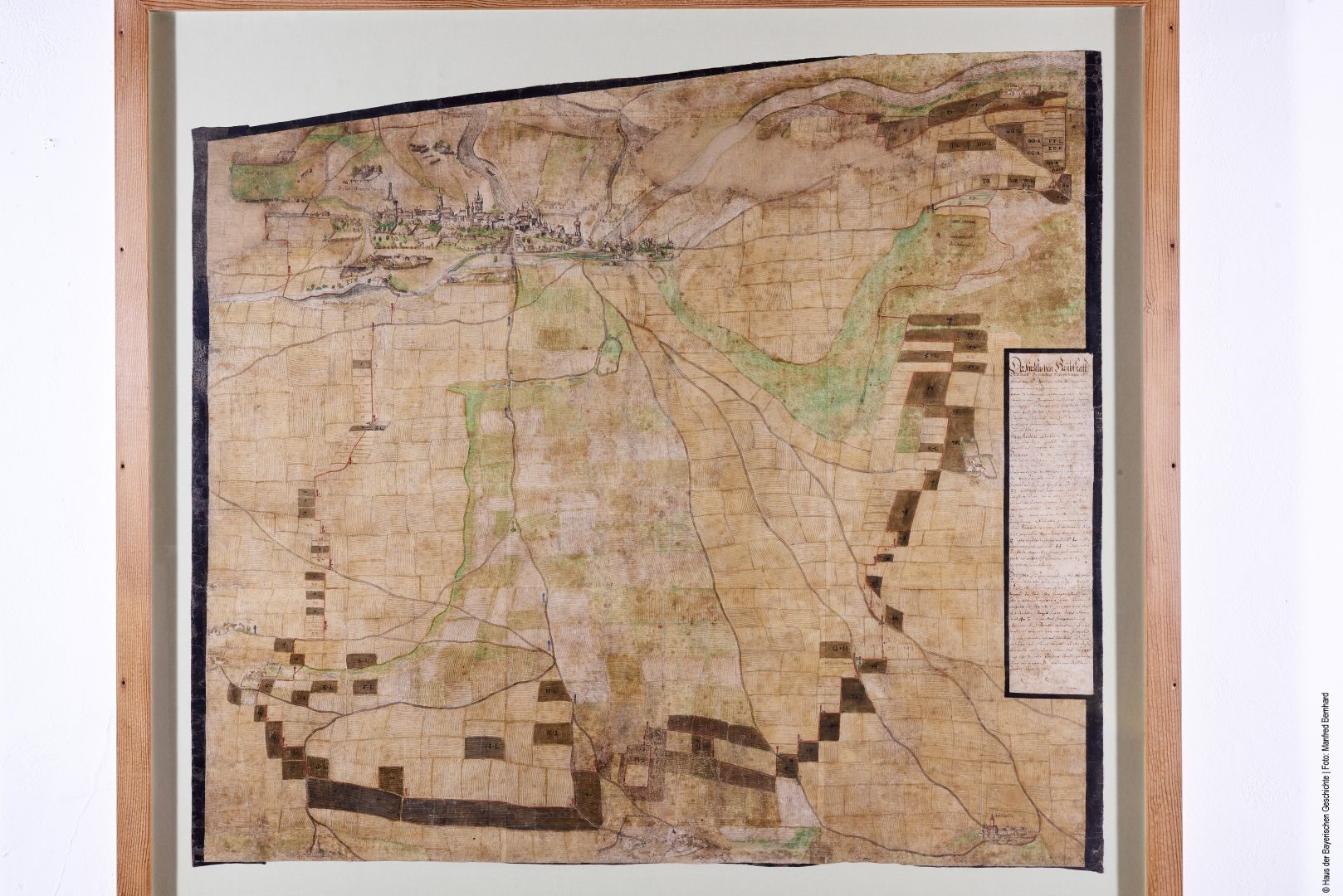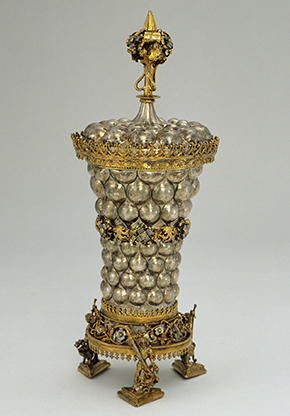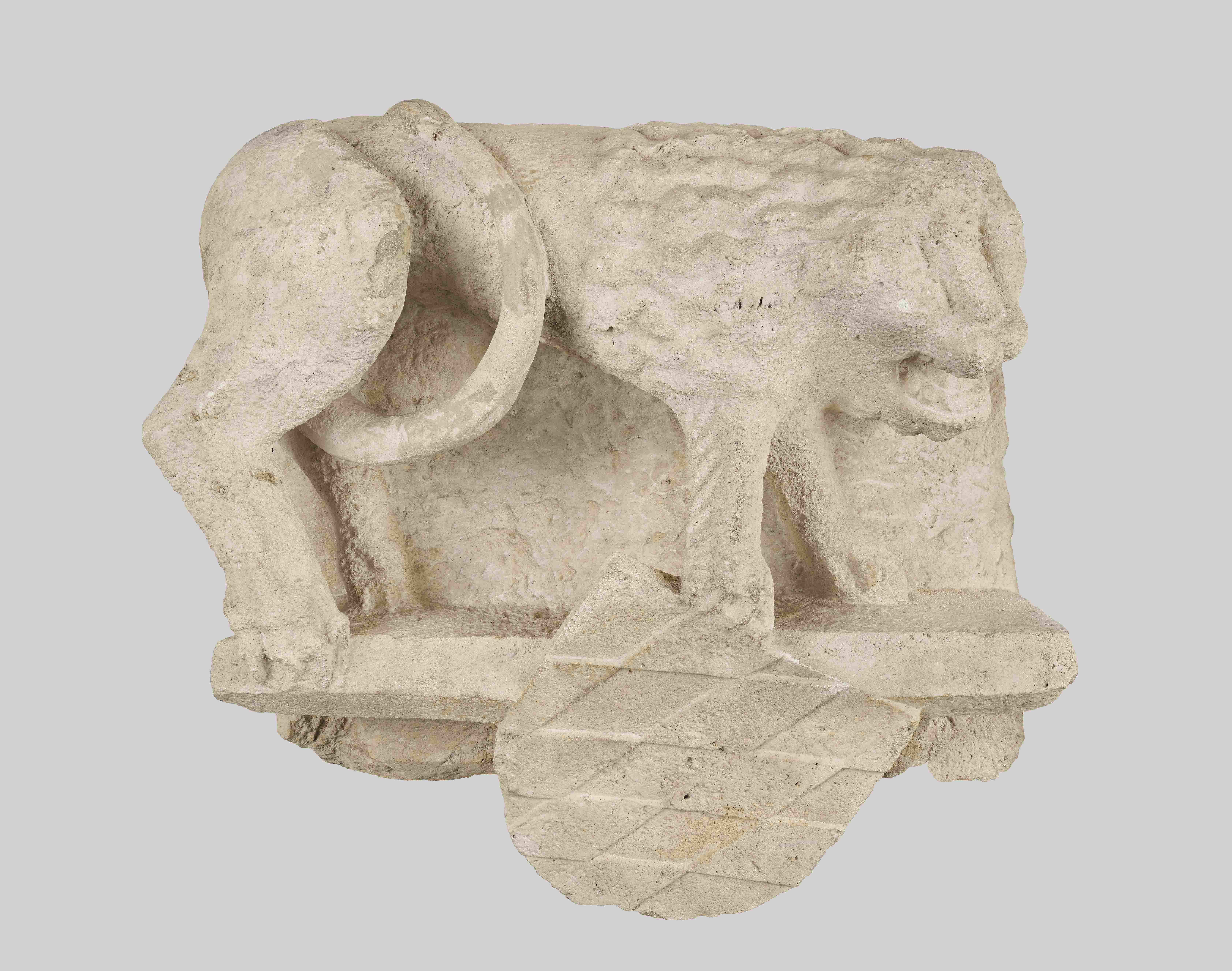STADT
BEFREIT
Wittelsbacher
Gründerstädte
City and Law
Cities also mean law and order! The new cities strove to establish themselves as separate jurisdictions. Burghers formed municipalities modeled after older episcopal cities. They had seals of their own and enacted their own laws – everything with the duke’s permission, of course!
Communal life in confined space had to be regulated – pastimes such as gambling were just as regulated as prostitution; swearing was punished severely. Trade regulations were liberal: Tradespeople could sell their products on the free market and no one was permitted to be thrown in the tower for debts anymore.
The most important thing, though: Anyone who resided in a city for one year and one day was free, i.e., their former lord could no longer simply reclaim them. This medieval legal principle was encapsulated in a catchy phrase in the 19th century: Urban air is liberating! The Nazis disliked this rule of law because they felt it excessively highlighted the liberal side of German urban history.
Local autonomy and a city council as the governing body – these were innovations of the European Middle Ages. The council was responsible for construction, the water supply, city finances, and tax collection. And, naturally, for maintaining public order!
Council families were descendants of ducal ministeriales, who had specialized in administration and finance during the foundational period of cities. The dukes, the cities’ actual overlords, generally remained very present in their cities. Their capitals of Landshut, Straubing, Ingolstadt, Burghausen and Munich – all of them embellished with ducal palaces – especially grew and were developed on a grand scale.
Straubing's Burgfrieden Map
Medieval cities are recognizable by their walls, buildings, squares and especially churches. A city exerted influence far outside its walls, though, since urban law applied to all the territory legally belonging to a city, thus possibly even for kilometers before the fortified city.
(from the audio guide of the Bavarian State Exhibition 2020)
Landau Urban Law (1340)
Being an urban burgher meant having responsibilities but also rights. What they were exactly was codified in charters confirmed by the dukes with a seal. The following excerpts are taken from Landau an der Isar’s first urban law code from the year 1304 - read by Klaus Wolf in 2020.
Executioner's Sword
Then as now, administering the law is the job of the courts. Religion’s importance to law was different earlier, though – as was the severity of punishment, which included the death penalty too.
(from the audio guide of the Bavarian State Exhibition 2020)
Covered Cup
Urban burghers grew increasingly assertive and desired to document their wealth and claim to power materialistically too. This covered cup from Ingolstadt city council treasury is visual evidence of this.
(from the audio guide of the Bavarian State Exhibition 2020)
Städte als Orte der "Freiheit"
Renate Eichmeier / Bayern 2 / 2016
Bavarian Lion
Unlike in imperial cities, the burghers in Bavarian cities were subject to the duke. The lion from Kelheim underscores the role the Wittelsbachs ascribed to themselves.
(from the audio guide of the Bavarian State Exhibition 2020)
Amberg unter den Wittelsbachern
Anneliese Volpert / Bayern 2 / 1980
Heinrich, Ludwig und Georg der Reiche
Thomas Grasberger / Bayern 2 / 2015
Die Gründung der Universität Ingolstadt 1472
Hartmut Grawe / Bayern 2 / 2011




